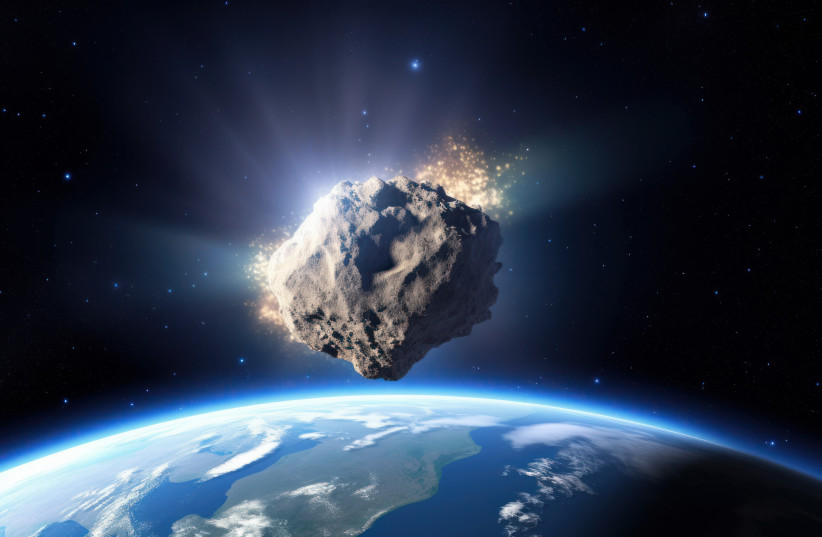Two asteroids, one the size of 16 and a half John Cenas and another the size of around three and a half adult female American bison, aka the buffalo, are set to pass very close to the Earth on Friday, March 15, according to NASA's asteroid tracker.
Dubbed 2020 FU and 2024 EK3 by the Center for Near-Earth Object Studies (CNEOS) at NASA's Jet Propulsion Laboratory (JPL), the latter asteroid will have a relatively close flyby to the Earth – far closer than most others tend to travel.
Its flyby date coincides with the Ides of March, the infamous day in which Roman leader Julius Caesar was assassinated.
E tu, asteroid? How big is the asteroid coming toward Earth in 2024?
NASA's current estimates for the size of asteroid 2024 EK3 range to as much as 11 meters in diameter.
To put that in perspective, lets take a look at the American bison, more commonly known as the buffalo, the large and majestic horned mammals that once roamed the American plains.

Bison are the largest mammals in North America. According to the US Department of the Interior, these behemoths (at least the females) can be as much as five feet tall. However, they neglect to include the length. For that, we turn to the Smithsonian, which says that a mature female bison can be as long as 3.2 meters.
To put that into context, asteroid 2024 EK3 is the size of around three and a half adult female buffalos snout to tail.
But what about the wings? Don't buffalo have wings that would, therefore, impact this measurement? Did thousands of people not order buffalo wings for dinner the other night?
No.
You can't see me: Is there a John Cena-sized asteroid passing the Earth on March 15?
Another asteroid is set to follow 2024 EK3 after its flyby of the Earth.
Designated 2020 FU, its name brings to mind the finishing move of famed professional wrestler.
And his name is John Cena!
At least, it brings to mind Cena's finishing move back when he had his "Doctor of Thuganomics" gimmick.
So, with that in mind, we will measure this asteroid by using the metric of WWE's "Face that Runs the Place" and the same face that recently ran on stage mostly nude at the Oscars.
NASA measures 2020 FU as being, at most, 31 meters wide. Despite John Cena's impressive stature, he doesn't quite measure up by himself. But what about two of him? What about three of him?
Considering that WWE billed him as 1.85 meters tall, the 2020 asteroid FU would actually be around 16 and a half inches tall, like John Cenas.
Talk about Hustle, Loyalty, Respect.... and Asteroids.

It's flying buffa-low: Will an asteroid hit the Earth in 2024?
Asteroids have already hit the Earth this year, specifically over Germany. These two asteroids don't seem like they might, but of them, 2024 EK3 is by far the most likely.
NASA's estimates state that 2024 EK3 will fly at just over 600,000 kilometers away from the Earth. That's much closer than most asteroids come, and is closer to Earth than the James Webb Space Telescope. But it's still farther away than the Moon, which orbits the Earth at around 385,000 kilometers.
Even if it did impact the Earth, 2024 EK3 is small enough that it may end up just burning away in the atmosphere, with anything that does land being incredibly small and not so dangerous.
The flyby happening to be on the rather auspicious and ominous day of betrayal and death that is the Ides of March is just a coincidence.
Friends, asteroids, and countrymen: Can we stop an asteroid from hitting the Earth?
Yes, we can. The field of planetary defense has seen a host of scientific endeavors to monitor space for possible asteroids as well as launch spacecraft to prevent any major impacts as part of the umbrella of the Asteroid Impact Deflection Assessment (AIDA) mission.
Of the projects under this banner, success has already been made with NASA's Double Asteroid Redirection Test (DART) mission, which managed to impact the faraway asteroid Dimorphous and alter its orbit.
With enough time in advance, scientists can do that again. This is why the most important step in planetary defense is keeping an eye on all incoming asteroids.
